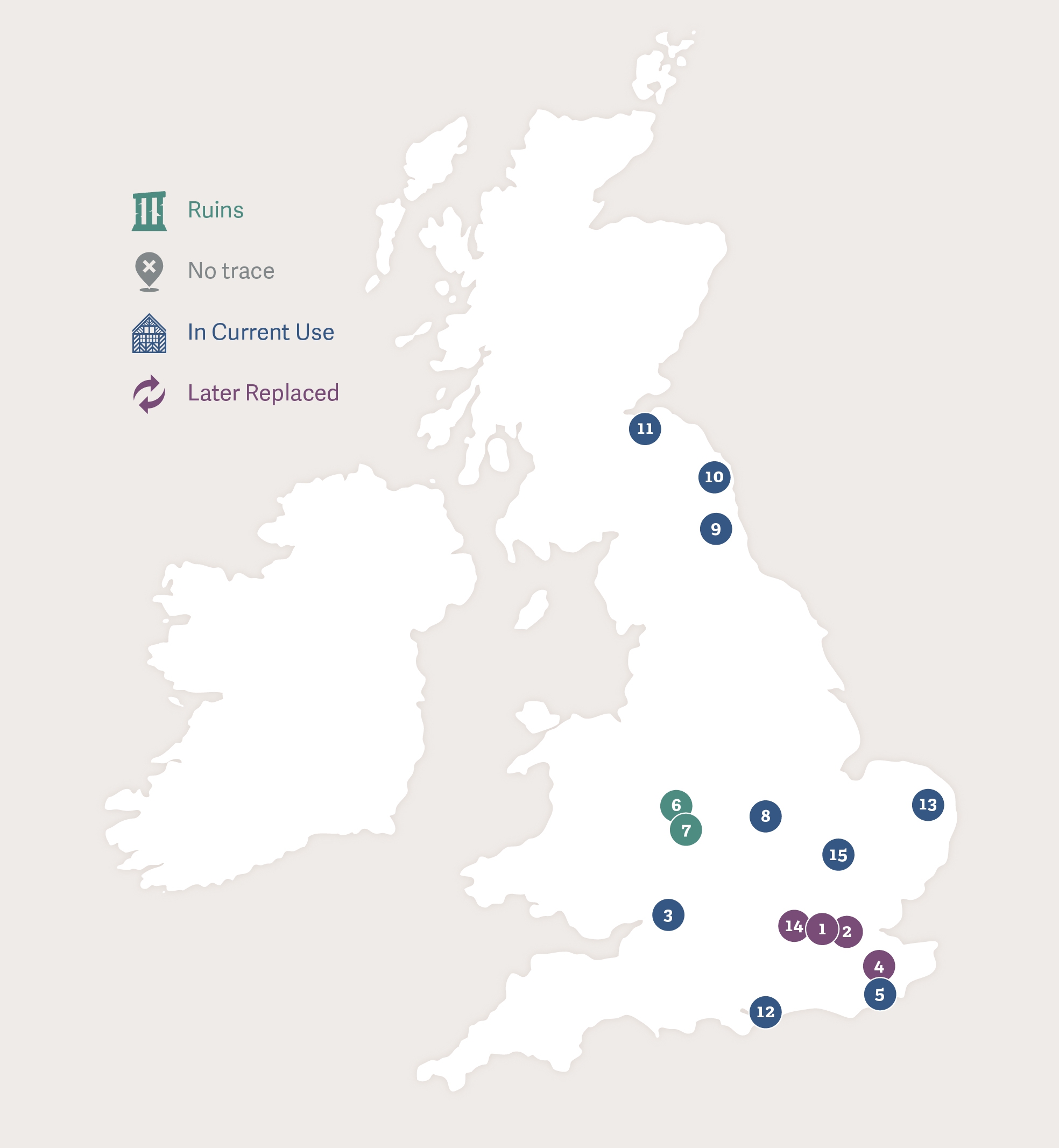John Dudley: On Land and Sea
In his capacity as Lord Warden of the Marches, and as Lord Admiral, Dudley travelled extensively around England both overland and by ship. He was also involved in two invasions of Scotland, both of which devastated Edinburgh.
The numbers against the places correspond to those on the map here and at the end of this article.
John Dudley was born in the heart of the city of London in Candlewick Street (1). Candlewickstreet Ward was one of the twenty-five ancient city wards. The street itself changed name over time, and is now called Cannon Street.
When Dudley was no more than six years old, his father, Edmund, was executed on Tower Hill (2), just outside the walls of the Tower of London. Although executions were public spectacles, it is unlikely that Dudley saw it. He did, however, remember his father fondly, once writing to Sir William Cecil of ‘[his] poor father who, after his master (Henry VII) was gone, suffered death for doing his father’s commandments…'
When his parents married, his mother, Elizabeth Grey, was only the granddaughter of Viscount Lisle, with an uncle and cousin living. However, in 1519 she inherited the barony of Lisle, becoming the 6th Baroness. Only the barony was heritable by a woman, but the viscountcy was recreated for Dudley’s step-father, Arthur Plantagenet – who was also the King’s half-uncle. According to the marriage settlement between Elizabeth and Arthur, Arthur, now Viscount Lisle, would retain a life interest in all of her Lisle estate, before it passed to Dudley on Arthur’s death.
After Elizabeth died in about 1525, the lands vested in Viscount Lisle. The management of the lands was a constant bone of contention between the men. Whilst Lisle needed to maximise his income, Dudley was also trying to raise as much cash as he could, and sold the reversion of some of the lands, leading to interminable law-suits when it was contended that Lisle’s actions might reduce the long term value of the property for the new owners.
One of the Lisle estates was that of Painswick (3) in Gloucestershire. Painswick, just north of Stroud, is a delightful town – built of Cotswold stone, it has many of the beauties of more famous Cotswold towns, but is much less well-known. New Street, which climbs a steep hill, was begun in 1428 and is lined with seventeenth and eighteenth century facades, many of which hide earlier originals. The town was the setting for the 2016 BBC television adaptation of J K Rowling’s novel, ‘A Casual Vacancy’.
There was a manor house at Painswick. In 1535, Dudley requested permission from Lisle to entertain Henry VIII and Anne Boleyn there during their summer progress to the West Country. The royal couple stayed there either before or after proceeding to Sudeley Castle, which is only a few miles distant.
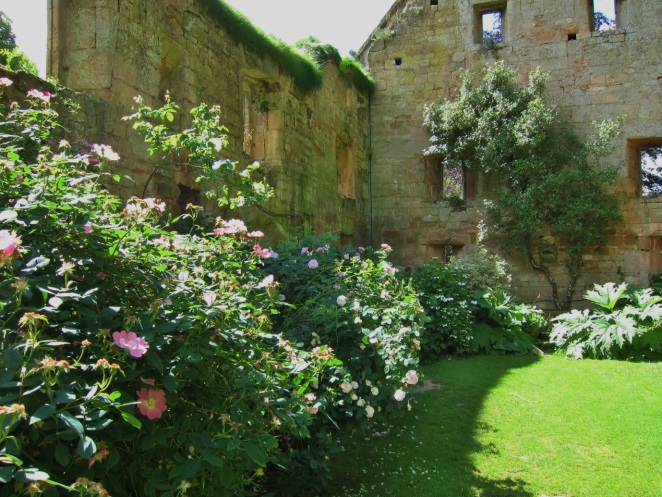
Whilst he was waiting to inherit the Lisle estates, Dudley had his own lands from his father, and also those of his wife, Jane Guilford – although there was a long-running dispute between the Dudleys and Jane’s cousin, Sir Henry Guilford, over the inheritance. The main Guilford lands were in Kent, around Tenterden, and the Dudleys came into possession of Halden Place (4), near Rolvenden. Henry VIII stayed at Halden on at least one occasion, en route to inspect the navy. The manor house was rebuilt in around 1740 with little trace of any earlier habitation. There is an interesting YouTube link with more information on the current property here
Halden is some twenty miles from Rye (5). Rye, developed behind an enormous earthenwork sea-wall, the Rye Camber, was one of the Cinque Ports and was subject to attacks by the French and the Flemish during the 1530s. The majority of the attacks were by pirates, rather than official enemy action, but pirates were often tacitly encouraged by governments.
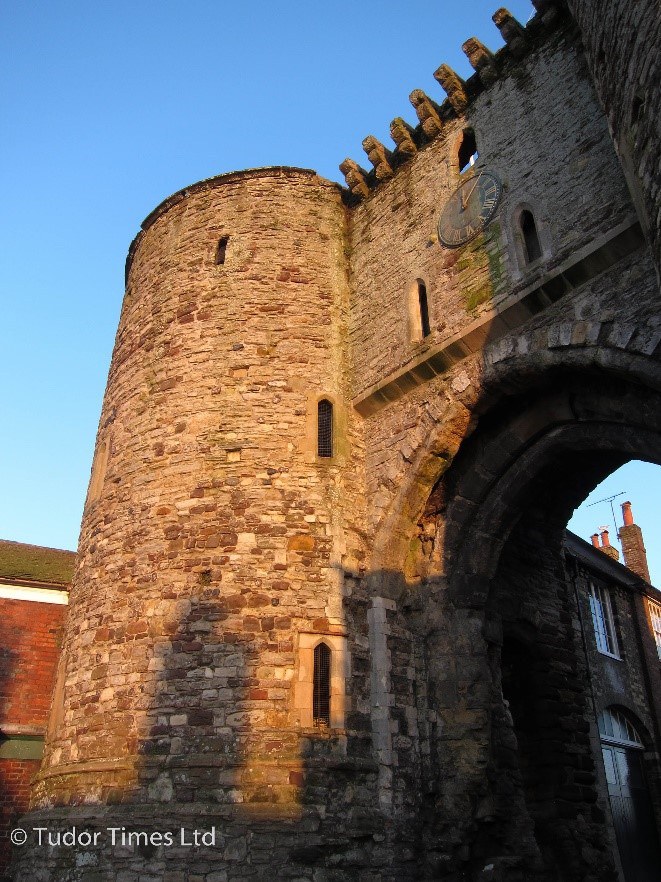
Dudley, in his capacity as Lord Admiral, had a duty to scour the seas and protect the coastal ports. In a brief action in 1537, just off Rye, he captured the Flemish Admiral of Sluys. Eight years later, in 1545, the French were again prowling the seas near Rye. Dudley and the English fleet came up, but contrary winds prevented a full encounter, and the French fleet returned to the Seine.
Rye today is another very attractive town. The ancient city walls and gatehouses are still extant in parts, and the narrow cobbled streets are wonderful. After the harbour became silted up, and ships became larger, it became a backwater so far as the navy was concerned – but it had a long and colourful history as a smuggling port during the Napoleonic wars.
Dudley’s great-grandfather, Edward Sutton, was Baron Dudley and his second cousin, Sir John Sutton, Lord Dudley, had inherited the family estates. Dudley was eager to return to the seat of his ancestors, and when Lord Dudley encountered financial difficulties, managed to take a mortgage of his lands, which Lord Dudley was unable to redeem – the whole matter was subject to lengthy litigation, but eventually John Dudley emerged with Dudley Castle (6) and other estates in the Midlands of England. Subsequently, most of his land deals concentrated on building up lands in the surrounding area.
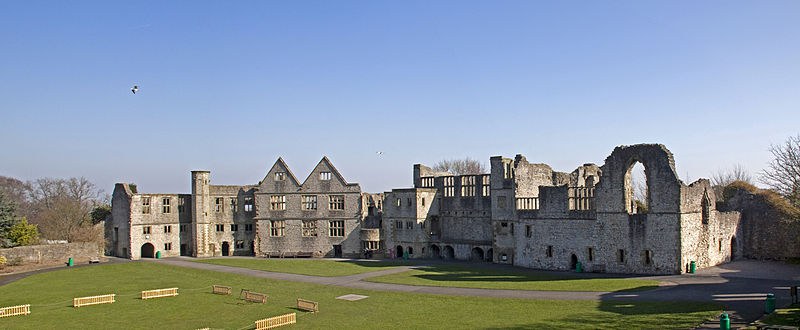
Dudley Castle is located, not surprisingly, in the town of the same name, just to the west of Wolverhampton. The original castle dated from just after the Norman Conquest, and is mentioned in the Domesday Book as the property of FitzAnsculf, whose father was probably one of William’s knights, from Picquiny. The impressive stone castle which Dudley acquired was soon extended by him with modern living quarters whilst Lord Dudley’s wife and daughters were obliged to take refuge at Nuneaton Priory. Mary I later restored the castle to the 4th Lord Dudley after John Dudley’s execution.
As part of his plan to concentrate his holdings in the Midlands, Dudley acquired the Abbey of Halesowen (7) in 1539. He wrote a letter of thanks to Cromwell for arranging the grant. Probably as a quid pro quo, he then sold Cromwell most of the Guilford holdings that had been awarded to him in the resolution of the dispute with Sir Henry Guilford.
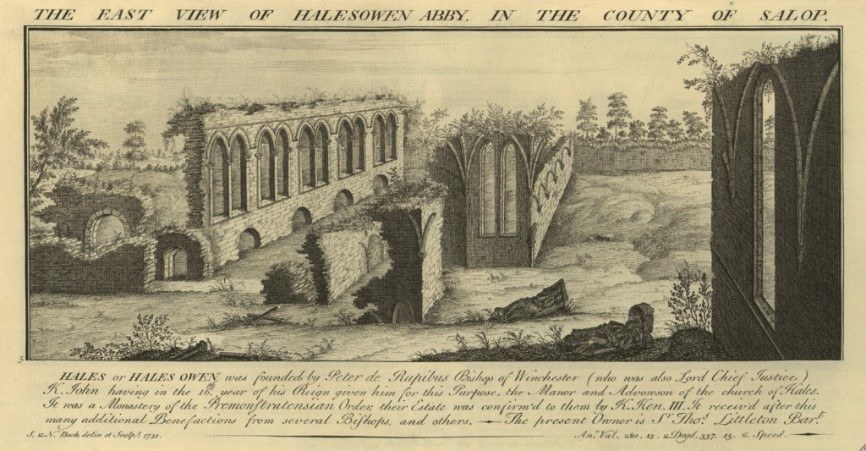
Halesowen Abbey had been founded by Peter de Roches, Bishop of Winchester under a licence from King John. The order that inhabited it was that of the Premonstratensian Canons (priests, rather than monks, who lived in communities). It was surrendered to Henry VIII in 1538, by the last abbot, William Taylor. The majority of the monastic buildings were quickly demolished – the remains of them are incorporated into farm buildings. The property is in the care of English Heritage, and more information on it can be found here.
Another manor that Dudley acquired was that of Kibworth (8). Kibworth Harcourt and Kibworth Beauchamp are twin villages in Leicestershire, considered so typical of the story of English villages that they were the focus of a BBC Four Television series, presented by the historian, Michael Wood.
Dudley was appointed first as Vice-Admiral, and then as Lord Admiral. This appears to have been a role that he thoroughly enjoyed and in which his talents for administration, personal relationships and physical courage were well used. In the spring of 1544, he had orders to take the fleet to Newcastle-upon-Tyne (9), as a staging point in the English campaign against Scotland. Newcastle was a thriving port, which had grown up around the castle, built by Robert Curthose, eldest son of William the Conqueror. As a sign of its importance, it had been granted its own charter, separate from the surrounding county of Northumberland, by Henry IV.
From its earliest days, the city was in the front-line of Anglo-Scottish conflicts. After the death of James V, shortly after the battle of Solway Moss, Henry VIII was determined to dominate the northern kingdom in a long-running war, known as the 'Rough Wooing'. Dudley was involved in several campaigns, both at sea and on land, and in 1544 he was ordered to take the 68-ship-strong fleet to Newcastle to collect troops and sail to the Firth of Forth. They were obliged to remain in the harbour for some weeks, owing to contrary winds, during which time Dudley probably lodged in the castle.
Another of the locations where Dudley stayed for some time during Scottish campaigns, was Alnwick Castle (10). As Lord Warden of the Marches, it was his duty to supervise the patrol of the Borders, over which there were frequent incursions by both sides, as well as by the lawless Border inhabitants, who cheerfully raided both countries indifferently.
Alnwick was, and is, one of the most important and impressive castles in all of England. Home of the Percy Earls of Northumberland for generations, it had come into the hands of Henry VIII when the 6th Earl (the same Henry Percy who had been in love with Anne Boleyn, before she caught the King’s eye) having no son, left his estate to the King. This decision was largely to disassociate himself from his brothers who had both been involved in the Pilgrimage of Grace. Henry came into possession in 1537, and it proved an ideal base for his various military leaders.
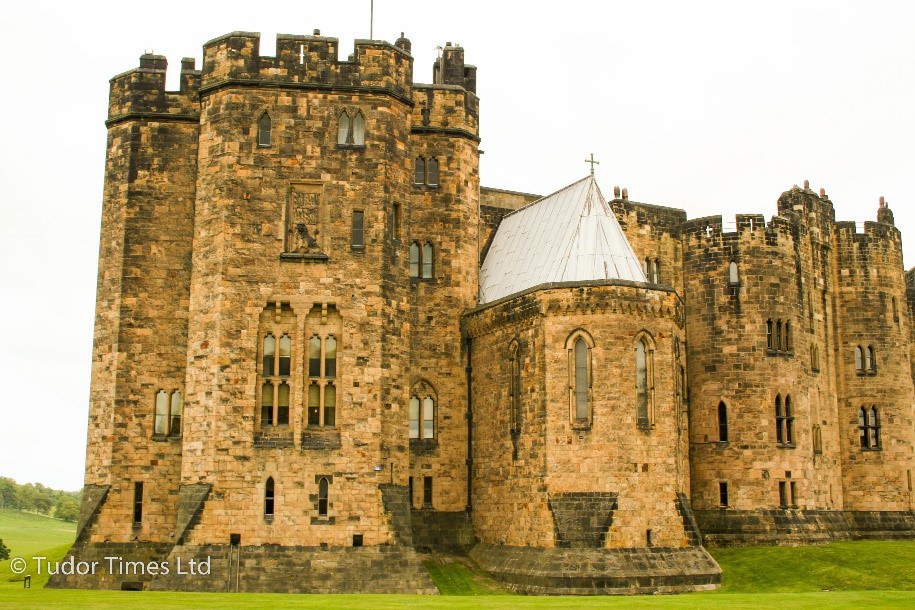
Alnwick today is still lived in by the 12th Duke of Northumberland and his family, the family lands having been restored by Mary I. It is the location of one of the most beautiful gardens in Britain, developed in the late 20th century by the Duchess of Northumberland. Particularly interesting is the Poison Garden – full of ancient medicinal and fatal herbs! A visit is highly recommended.
Dudley was involved in two main Scottish campaigns – the one of 1544, where he sailed the fleet from Newcastle, and the later one of 1547, that culminated in the Battle of Pinkie. During both Edinburgh (11) was attacked and extensively damaged, although Edinburgh Castle itself was not captured.
As Lord Admiral, Dudley was in command of Henry’s navy. The King had a strong interest in ship-building and naval matters generally, and it was whilst the whole navy was gathered at Portsmouth (12) in the summer of 1545, under Dudley’s command, that the 'Mary Rose', Henry’s pride and joy, sank. Dudley himself was on the flag-ship, the 'Henry Grace a Dieu', whilst the 'Mary Rose' was captained by his Vice-Admiral, Sir George Carew. Numerous attempts were made to re-float the incredibly expensive and well-provisioned vessel, but she remained at the bottom of the Solent until 1982. Since then, a museum has been built to house the remains of the 'Mary Rose' and the information gleaned from the ship has given historians and archaeologists an unrivalled insight into Tudor naval life. See more about the museum here.
On the death of Henry VIII, Dudley lost his position as Lord Admiral. He was replaced by a man who had been his deputy – Sir Thomas Seymour. Seymour was the brother of the Lord Protector Somerset, and received the role rather in the nature of a consolation prize for Somerset’s refusal to share any meaningful power with his brother. Dudley, who had been closely allied to Somerset in the various Scottish campaigns, was seen as a successful military commander, and it was to him that leadership of the royal forces against Kett’s Rebellion was committed.
Kett, a gentleman farmer of Norwich, was leader of a widespread uprising, against the economic woes of the late 1540s. The rebels were encamped on Mousehold Heath (13) for several weeks. The skirmish that ensued, with Dudley and the royal troops the obvious victors, was known as the Battle of Dussindale. The Heath then was more extensive than today, although it is still a substantial area of nature reserve on the edge of the mediaeval city of Norwich and a haven for wildlife, particularly heathland butterflies.
Dudley’s power grew, and he eventually replaced Somerset as Lord President of the Council and effective Regent. It was at his home at Ely Place (14) that he and his supporters met to plot the overthrow of Somerset. Ely Place (or palace) had been the London Inn of the Bishops of Ely. It was begun around 1250 and added to by various prelates. By the mid-sixteenth century, there were gardens and orchards and a great gatehouse built by Thomas Arundel, later Archbishop of Canterbury. The property extended more or less from Holborn to the modern Clerkenwell Road, and from Leather Lane to Saffron Hill – an impressive plot.
During early 1553, Edward VI drew up his ‘Devise for the Succession’, under which Dudley’s daughter-in-law, Lady Jane Grey, was named as the King’s successor. How far this scheme originated with Dudley, and how far with the King himself has been a matter of debate. Suffice to say, the Privy Council and Jane herself demanded that Dudley lead the army that was sent from London to capture Jane’s rival, Henry VIII’s elder daughter, Mary.
Mary had vast landholdings in East Anglia, and Dudley led his troops out of London via what is now the A11, with a view to homing in on Mary’s great stronghold at Framlingham. However, before he had got further than Cambridge (15) it was apparent that Mary had overwhelming support, and that, short of beginning a new civil war, there was little chance of preventing her taking the throne. Dudley admitted defeated and proclaimed the new Queen in the market place of Cambridge. It was too little, too late. He found himself in the Tower, and within weeks was executed, as his father had been.
The map below shows the location of the places associated with John Dudley discussed in this article.
